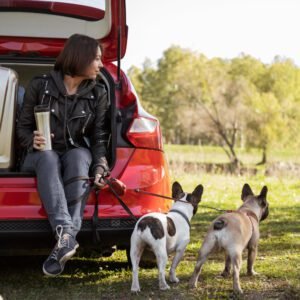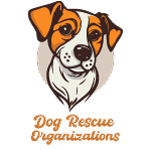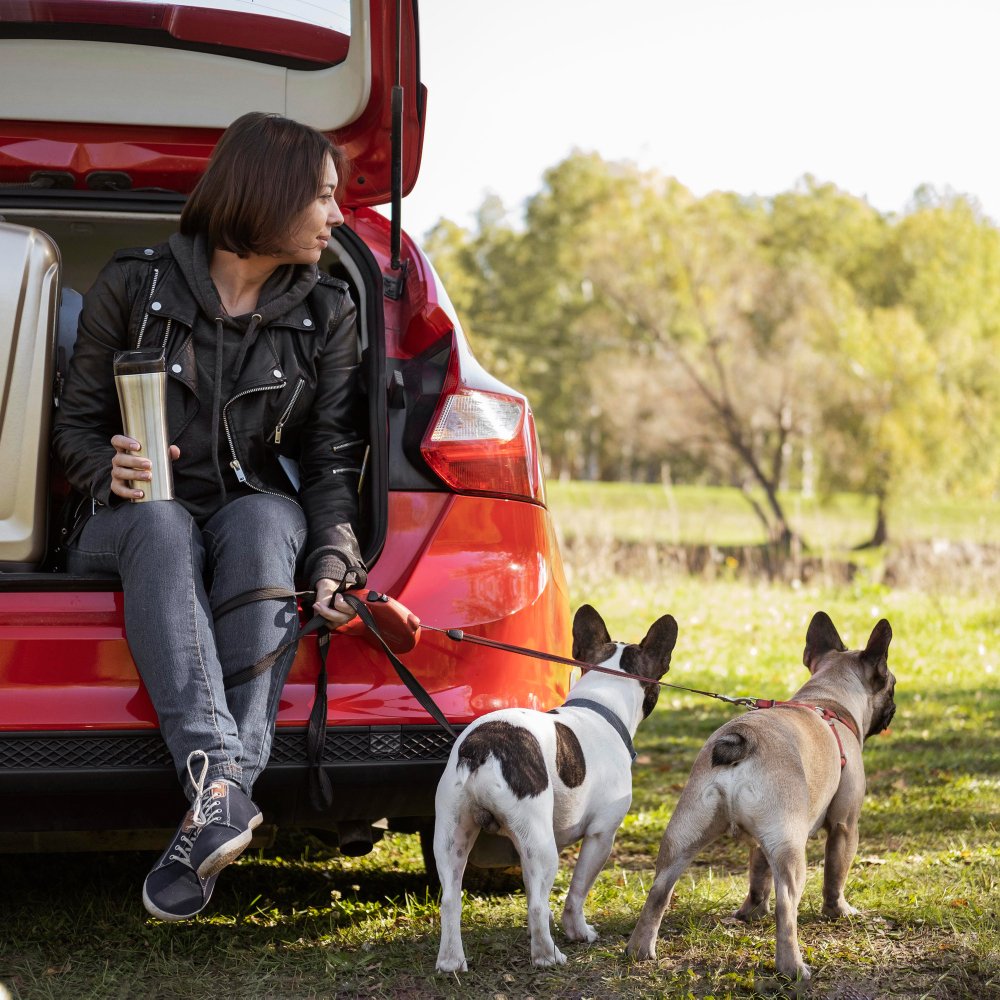Introduction
Going on trips with your dog can be a great way to spend time together and make memories that will last a lifetime. Taking your dog with you on a car trip can make the trip even more fun, whether it’s to a nearby park or to another country. How can you make sure that both you and your dog have a smooth and stress-free trip? Here are some great tips for traveling with your dog that will keep you both safe and happy.
Table of Contents
ToggleGetting ready for the trip
Research Your Destination
Before you hit the road, you need to do a lot of study on where you’re going. Make sure that the place you want to visit allows pets and has rooms that are dog-friendly. Find places like parks, beaches, and outdoor trails where your dog can enjoy himself and discover new things.
Check Pet-Friendly Accommodations
There are a lot of hotels, hostels, and vacation homes that allow pets. However, rules can vary greatly, so check that your lodging takes dogs and understand any limits or fees. Websites like BringFido can be helpful in finding pet-friendly housing.
Schedule a Vet Visit
A pre-trip doctor check is important to ensure your dog is healthy and ready for travel. Update vaccines, get a health certificate if needed, and talk any possible health issues with your vet. This is also a good time to ask about travel sickness treatments and other medicines.
Packing Essentials for Your Dog
Food and Water Supplies
Pack enough food and treats for the entire trip, along with a movable water bowl and drinking water. Maintaining your dog’s regular food helps avoid stomach issues while moving.
Comfort Items
Bring along your dog’s favorite toys, beds, and a familiar blanket to provide warmth and reduce nervousness. Having these things can make new settings feel more like home.
Health and Safety Items
Include a first-aid kit, any necessary medicines, and flea/tick control items. Also, pack trash bags, a leash, and a harness or collar with identification tags.

Traveling by Car
Ensuring Safety in the Car
Safety should be your top concern when going by car. Use a pet car belt, leash, or a protected box to keep your dog safe. Never let your dog ride in the front seat or stick their head out the window.
Keeping Your Dog Comfortable
Keep the car cool and well-ventilated. Take regular breaks to allow your dog to stretch, relieve themselves, and burn off some energy. Plan your route with dog-friendly rest stops in mind.
Managing Long Car Rides
Long car rides can be difficult. Bring plenty of water and offer small amounts frequently. Provide interactive toys to keep your dog entertained and consider using relaxing goods if your dog gets nervous.
Traveling by Plane Airline
Policies and Requirements
Each flight has its own pet travel rules, so check the requirements in advance. This includes size limits, carrier specs, and any necessary paperwork.
Preparing Your Dog for Air Travel
Introduce your dog to the travel box well before the trip. Make the box cozy with blankets and a favorite toy. Practice short trips to get your dog used to being in the box for longer times.
Tips for a Smooth Flight
Feed your dog a light meal a few hours before the flight and ensure they have time to empty themselves before leaving. During the trip, keep them calm and comforted with familiar things and a calming voice.
Traveling by Train or Bus
Pet Policies for Trains and Buses
Pet rules for trains and buses can vary, so check with the transportation company before booking. Some may have limits on the size or number of pets allowed.
Preparing for Public Transport
Ensure your dog is comfortable with public travel settings. Practice taking shorter trips on neighborhood buses or trains to get them adjusted to the sights and sounds.
Tips for a Calm Journey
Bring a comfortable cage and keep your dog close to you. Provide familiar toys and treats to keep them busy, and stay calm to help your dog remain relaxed.
Keeping Your Dog Safe
Using Identification Tags and Microchips
Ensure your dog wears a collar with an up-to-date ID tag and consider microchipping for extra protection. This raises the chances of being reunited if your dog gets lost.
Understanding Pet Insurance
Traveling can come with unexpected risks, so consider pet insurance that covers travel-related events. This can provide peace of mind and cash safety.
Emergency Preparedness
Know the location of the nearby medical centers and emergency services at your arrival. Have a plan in case of an emergency, including a list of important contacts.

Maintaining Routine and Comfort
Keeping a Regular Feeding Schedule
Maintaining your dog’s normal food plan helps keep them relaxed and reduces stress. Bring known food and feeding bowls to keep things regular.
Exercise and Bathroom Breaks
Regular exercise and bathroom breaks are important to keep your dog happy and healthy. Plan your plan to include walks and playing.
Familiarizing with New Environments
When you arrive at a new location, give your dog time to explore and get used to the surroundings. This helps lower nervousness and makes them feel more safe.
Dealing with Anxiety and Stress
Recognizing Signs of Anxiety
Be aware of signs of nervousness, such as increased panting, drooling, or whining. Understanding these signs helps you handle your dog’s wants quickly.
Using Calming Aids and Techniques
Calming tools, such as pheromone sprays, anxiety wraps, or natural vitamins, can help soothe your dog. Techniques like gentle rubbing and relaxing music can also be helpful.
Creating a Calm Environment
Keep a calm attitude and provide a quiet, cozy place for your dog. Avoid quick changes and loud noises that could raise nervousness.

Health Considerations
Managing Travel Sickness
Some dogs suffer road sickness. Consult your vet for medicine choices and try to keep your dog looking forward to prevent sickness.
Keeping Up with Medications
Ensure you have enough of your dog’s daily medicines for the entire trip. Keep them in their original cases with clear labels.
Handling Medical Emergencies
In case of a medical emergency, have a first-aid kit and know the addresses of close veterinary services. Being prepared can make all the difference.
Finding Pet-Friendly Activities
Outdoor Adventures
Look for outdoor things like hikes, beach trips, and dog parks where your dog can have fun and exercise. Always follow city rules and leash laws.
Visiting Pet-Friendly Attractions
Many sights, such as green parks and historical spots, accept dogs. Check ahead to find places where your dog is allowed and enjoy exploring together.
Dining with Your Dog
Seek out pet-friendly places and bars with outdoor seats. It’s a great way to enjoy local food while having your dog by your side.
Etiquette and Responsibility
Respecting Pet Policies
Always follow the rules of places you visit with your dog. Follow leash rules, stick to marked pet places, and be aware of other guests.
Cleaning Up After Your Dog
Carry trash bags and clean up after your dog. It’s important to keep public areas clean and nice for everyone.
Socializing Your Dog
Socialize your dog with other animals and people to ensure they are well-behaved in different settings. Positive exchanges make flying more fun for everyone.

Special Considerations for Puppies and Seniors
Traveling with Puppies
Puppies have special needs, including more frequent bathroom breaks and playing. Keep their vaccine timeline in mind and plan accordingly.
Traveling with Senior Dogs
Senior dogs may require extra warmth and care. Bring extra blankets, watch their health closely, and avoid hard activities.
Additional Tips for Special Needs Dogs
Dogs with special needs may require extra planning and tools. Consult your doctor and ensure you have everything necessary for their comfort and safety.
Check out some other suggestions:
FAQs
The best travel crates are strong, well-ventilated, and comfy for your dog. Brands like Petmate and Sherpa offer highly-rated choices.
Consult your vet for medicine choices and try to keep your dog looking forward. Frequent stops and fresh air can also help lessen sickness.
Yes, but you need to check the exact conditions of the flight and the target country. This often includes vaccines, health certificates, and confinement rules.
Ensure your dog has a microchip and an ID tag with updated contact information. Immediately call nearby shelters, medical offices, and use social media to share the word.
Bring familiar blankets and toys, keep their pattern, and take them for regular walks. Choose pet-friendly hotels that provide special services for dogs.





One thought on “Tips for Traveling with Your Dog”